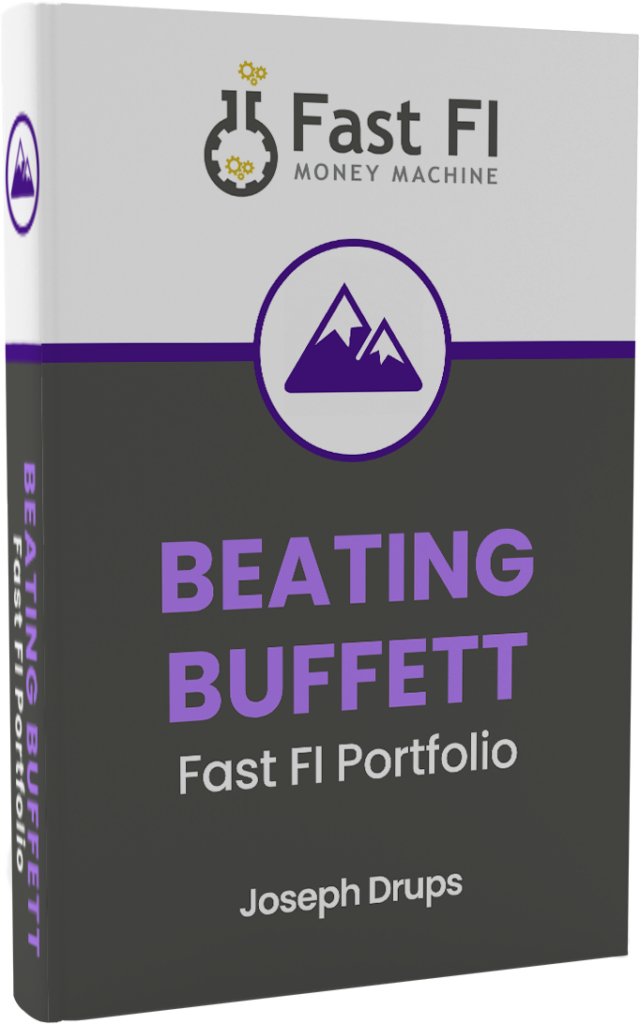DrupsInvesting.com is focused on the mission of developing an exponential organization around democratizing small business investing. This post describes the problem we’re working to solve and the opportunity when we’re successful.
The Problem
Small businesses offer an illiquid asset class that is largely unavailable to the mainstream investor and many career focused operators.
In a time of uncertainty, risk, and high asset prices, investors are reaching for yield and hungry for alternative investments that can earn secure returns.
However, the traditional staples of the American small investor are failing. For decades, Wall Street has settled on the narrative of index fund investing to replace mutual fund investing. However, during this same time we’ve seen the price to earnings ratio of virtually all public market investments climb to historic highs while demographics trend down. These trends leave the expectation of falling returns on those investments for decades to come.
Currently, small business investing is only open to operators and the elite of our society in the form of private equity. To add to the problem, small business acquisition and operations is difficult. There’s a fractured, complicated web of management, hiring, business services, and complexity that every successful small business operator has to navigate. This complexity makes transitioning out of small business ownership difficult.
This has led to huge inefficiencies and a highly fractured market for buying, selling, and managing businesses under $10 Million in revenue. Essentially, successful small businesses are one of the least liquid forms of investing and difficult to scale effectively. Their acquisition process is arduous, and most forms of financing aren’t available to them.
The Societal Impact
In total, there are 33.3 million small businesses in the US making up 99.9% of all businesses and 45.9% of all employment according to Forbes. Despite employing about half of the total employees of the country, small businesses represent 2/3 of all new jobs according to Forbes. That makes small businesses the job creation engine of a nation.
Even though small businesses make up the vast majority of businesses and new job growth, oftentimes businesses with less than $10 Million in revenue operate in a financing desert. Banks only lend based on physical assets or personal guarantees, and to sell a small business you have to find a private equity firm or operator who can take over and run the business.
The Operator Problem
Selling, managing, and transitioning a small business is hard. The small business owner looking to transition or retire is left with three difficult options.
- The small business owners simply shut down their business if they can’t pass it onto their children, an employee, or a seller.
- The small business owner may have to sell their business at a low multiple. Imagine spending decades of your life building a successful business and only getting a price of 2x-3x one year’s earnings. Contrast that with the price of the stock market at an average price over 20 times earnings.
- The small business owner has to build a self-managing organization from scratch which they can transition to employees to run. It’s a rare operator who can effectively work themselves out of their small business, and this often requires a high level of profitability, knowledge, and resources to accomplish that most entrepreneurs don’t have.
The majority of small business entrepreneurs in our country get 4x times earnings or less for their small business. Operators oftentimes can earn much higher returns by simply buying and holding the business rather than selling it, but that’s not always possible. All of these dynamics lead to a fragmented marketplace.
Overall, this represents a hard problem that has traditionally been dealt with using a private equity funding model which only addresses a small fraction of the market. This industry is ripe for disruptive ideas, and represents a huge opportunity for an exponential organization that can solve it.
The Investor Problem
Although investors can earn incredible returns on small business investing, it’s hard for investors to effectively build a portfolio out of small business investments. Small business investors can earn upward of 32% on a small business investment while paying an operator to run the given business. These investments are hard to source, and operators are hard to find. Some private equity firms operate to alleviate this need, but since they are incentivized to grow assets under management when they’re successful, they scale up, go after larger deals. This pushes successful private equity firms out of the small business marketplace. Successful operators and firms that operate in the small business investing space are generally private, hard to find, or closed for investment to select investors.
Technology and Globalization Problem
The nature of small businesses and lack of economies of scale creates constraints on the owner which limits the tools, technology, and best practices that are available to a small business. That means oftentimes the business grows to the place of the founder’s incompetence and stagnates. In larger organizations, leaders are able to pull from a larger network of experts and utilize the strengths of a broad set of people. This creates a specialization of labor and an ability to utilize the best practices of an industry not available to a small business.
Practically, these constraints create a bottleneck for innovation where technology, management processes, and the benefits of a global workforce are rarely utilized in small, main street businesses under $10 Million in revenue.
The Opportunity
The unique problems of an illiquid, complex, hard-to-manage small business market offers a huge opportunity to democratize small business ownership.
The opportunity lies in the convergence of a series of trends.
- Global Marketplace: The global marketplace offers a network of remote specialists who businesses can hire in fractional roles. This creates the opportunity to fractionally employ specialists, an executive team, and experts at a relatively lower cost and greater specialization. This opens specialization to small businesses that was previously only available to larger companies through economies of scale. However, this strategy is difficult to pull off within a single small business due to the lack of recruiting abilities, and would be best carried out by a pool of small businesses each employing similar fractional employees.
- Scalable Labor: The Global Marketplace also creates the ability to rapidly scale specialized labor remotely and cut costs by 50%+ depending on the role being hired.
- Technology: Remote work technology, automation, and AI is converging to allow for new methods of managing organizations which hasn’t yet been applied to the small business marketplace. There is a gap between Silicon Valley and Main Street business on the use of technology. With this gap, there exists an opportunity to develop a technology solutions platform that would rapidly transition technology from Silicon Valley to Main Street. This again, would best be done within a pool of small businesses rather than by individual small businesses.
- Crowdfunding: Crowdfunding has become a mature industry. There exist multiple marketplaces that deal with crowdfunding start-ups, real estate projects, loans, and other similar ventures. However, there doesn’t yet exist a marketplace for main street small business investing.
- The Market Hole: Crowdfunding has become a mature industry, but there is a hole in the market that hasn’t yet solved the problem of crowdfunding successful cash flowing small businesses.
These trends together offer new solutions to the old problems of managing, owning, and running small businesses. The convergence of these trends line up with a $2.4 Trillion dollar opportunity that will create tailwinds for the next few decades for acquiring small businesses representing one of the greatest opportunities for wealth accumulation in the history of the United States.
$2.4 Trillion Dollar Opportunity
The opportunity over the next two decades to purchase small businesses in the United States is one of the best investing opportunities of our lifetime.
I don’t think I’m overstating this.
According to the CGK, baby boomers consist of 74,102,309 people whereas the following generation, Gen X, represents 49,151,059 people. There’s a gap of 33.7% of the population between the two generations.
Here are the key points:
- 72.6 years Avg Retirement: According to the SBA, business owners on average retire at 72.6 years old. That means from 2018 through 2038 there’s a buyer’s market in small business acquisitions based on the estimates for baby boomers retiring.
- ½ of Business Owners are Over 55: Half of all business owners in the U.S. are over age 55 according to the Census Bureau. That means they’re looking to retire and sell their business in the next few decades.
- 33.2 Million Small Businesses: Finally, there are 33.2 million small businesses in the United States according to the United States Chamber.
- 33.7% Gap: As I mentioned above, there’s a 33.7% gap between the population of the Baby Boomers and Gen X.
- $2.4 Trillion Opportunity: At the average revenue for small businesses in the U.S., that equates to a $2,384,000,000,000 opportunity. Where in the public markets will you find a positive demographic trend and returns over 30%?
Compare that opportunity to the over-valued stock market which will have retirees in the U.S. cashing out over the next 20 years and moving to more secure investments and fixed income alternatives. That means falling valuations in the Stock Market, falling returns, and all that happening while small business yields are selling for bargain bin prices.
At DrupsInvesting.com we’re passionate about empowering entrepreneurs and investors through democratizing small business ownership. We believe that democratizing small business ownership represents a massive opportunity, and we’re looking for people who are passionate about the same mission.
If you’re interested in learning more, Contact us by filling out the contact form below, or reaching out to me, Joseph Drups, on LinkedIn.






